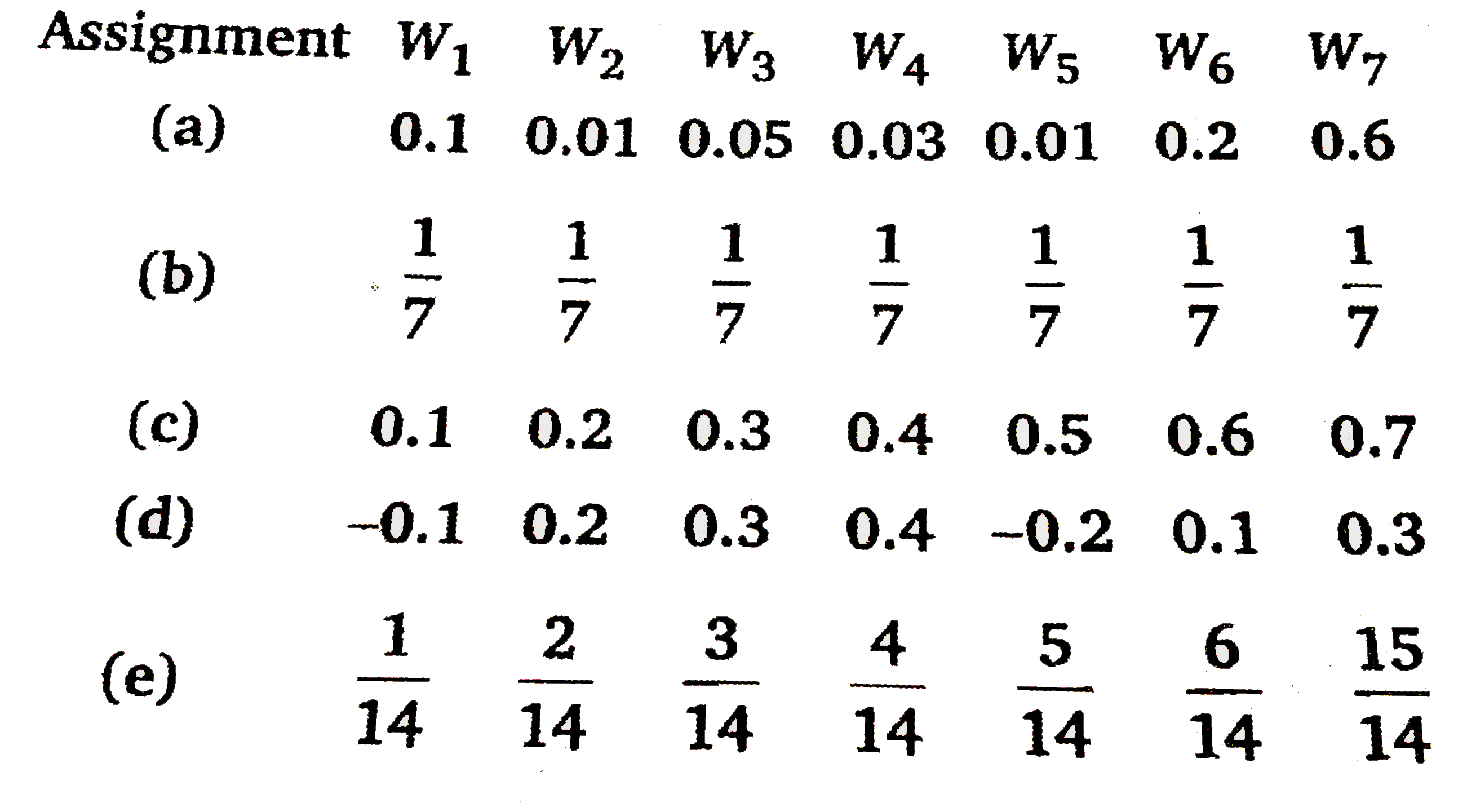Three numbers are chosen at random without replacement from {1,2,3,....10}. The probability that the minimum of the chosen number is 3 or their maximum is 7 , is:Solution in Bengali
Let E1 be the event ''getting smallest number 3''. And E2 be the event ''getting greatest number 7'' Then, P(E1) = P(getting one number 3 and other two from number 4 to 10)
=.1C1×.7C2.10C3=740
Similarly,
P(E2)=P (getting one number 7 and other 2 from numbers 1 to 6)
=.1C1×.6C2.10C3=18
P(E1∩E2)=P (getting one number 3 second number 7 and third from number from 4 to 6)
=.1C1×.1C1×.3C1.10C3=140
∴P(E1∪E2)=P(E1)+P(E2)−P(E1∩E2)
=740+18−140
=7+5−140=1140
Topper's Solved these Questions
- PROBABILITY I BOOK - CENGAGE PUBLICATIONCHAPTER - PROBABILITY I EXERCISE - Solved Example
9 Videos
- PROBABILITY I BOOK - CENGAGE PUBLICATIONCHAPTER - PROBABILITY I EXERCISE - Exercise 9.1
6 Videos
- PROBABILITYBOOK - CENGAGE PUBLICATIONCHAPTER - PROBABILITYEXERCISE - All Questions
470 Videos
- PROBABILITY IIBOOK - CENGAGE PUBLICATIONCHAPTER - PROBABILITY IIEXERCISE - MULTIPLE CORRECT ANSWER TYPE
6 Videos
Similar Questions
When a fair dice is rolled, the number that comes up top is a number between one to six. Assuming we roll the dice once, to check the possibility of three coming up.
View SolutionWhich of the following cannot be valid assignment of probabilities for outcomes of sample space S={W1,W2,W3,W4,W5,W6,W7}

View SolutionA coin is tossed three times, consider the following events. A : ‘No head appears’, B: ‘Exactly one head appears’ and C: ‘Atleast two appear’. Do they form a set of mutually exclusive and exhaustive events?
View SolutionLet EandF be two independent events. The probability that exactly one of them occurs is 1125 and the probability if none of them occurring is 225. If P(T) denotes the probability of occurrence of the event T, then (a) P(E)=45,P(F)=35 (b) P(E)=15,P(F)=25 (c) P(E)=25,P(F)=15 (d) P(E)=35,P(F)=45
View SolutionThree numbers are chosen at random without replacement from {1, 2, 3, ...... 8}. The probability that their minimum is 3, given that their maximum is 6, is (1) 38 (2) 15 (3) 14 (4) 25
View SolutionThree numbers are chosen at random from numbers 1 to 30. The probability that the minimum of the chosen numbers is 9 and maximum is 25, is
View SolutionIf three numbers are drawn at random, successively without replacement from as set S ={1,2,…., 10}, then the probability that the minimum of the chosen numbers is 3 or their maximum is 7, is
View SolutionThree numbers are chosen at random without replacement from {1,2,3, …8}. The probability that their minimum is 3, given that their maximum is 6, is-
View SolutionThree numbers are chosen at random without replacement from {1,2,3,….8}. The probability that their minimum is 3, given that their maximum is 6, is
View SolutionIf three number are drawn at random successively without replacement from a set S = {1, 2, . . . . 10}, then the probability that the minimum of the chosen number is 3 or their maximum is 7 .
View SolutionThree numbers are closen at random without replacement form {1,2,3,……,8} . The probability that their minimum is 3 , given that their maximum is 6 , is :
View SolutionThree numbers are chosen at random (without replace ment) from the numbers 1, 2,... 20. The probability that the numbers are not consecutive are
View SolutionIf three numbers are drawn at random successively without replacement from a set S={1,2,…..10}, then the probability that the minimum of the chosen numbers is 3 or their maximum is 7 is
View Solution{1,2,3,……….8} में से यादृच्छया प्रतिस्थाना बिना, तीन संख्याएं चुनी गई। यह दिया है कि उनमें से अधिकतम संख्या 6 है तो न्यूनतम संख्या के 3 होने की प्रायिकता है
View Solutionसमुच्चय S={1,2,3,….,3n}में तीन संख्याओं को यादृच्छया चुना जाता है , तब चुनी गई संख्याओं के तीन से भाज्य होने की प्रायिकता है
View SolutionThree numbers are chosen at random without replacement from {1, 2, 3, ...... 8}. The probability that their minimum is 3, given that their maximum is 6, is
View Solution
